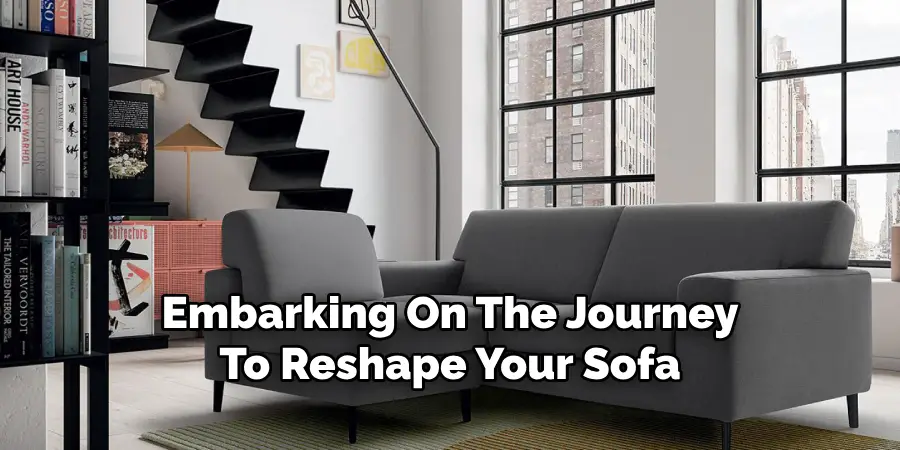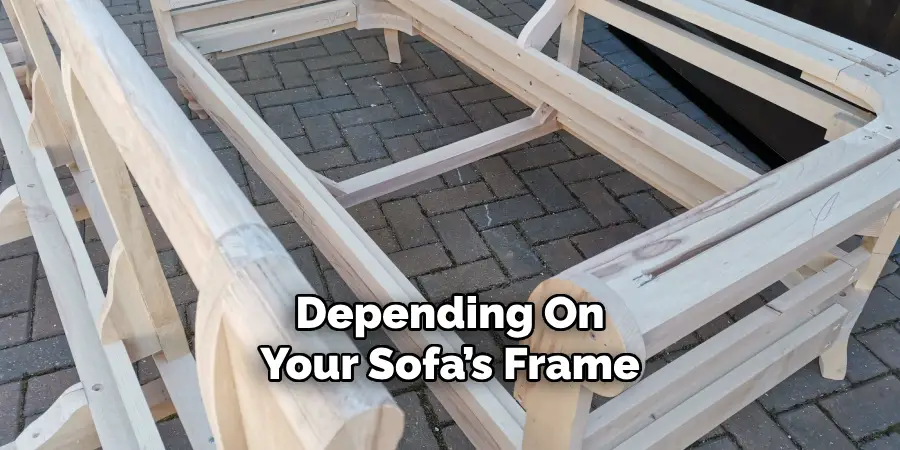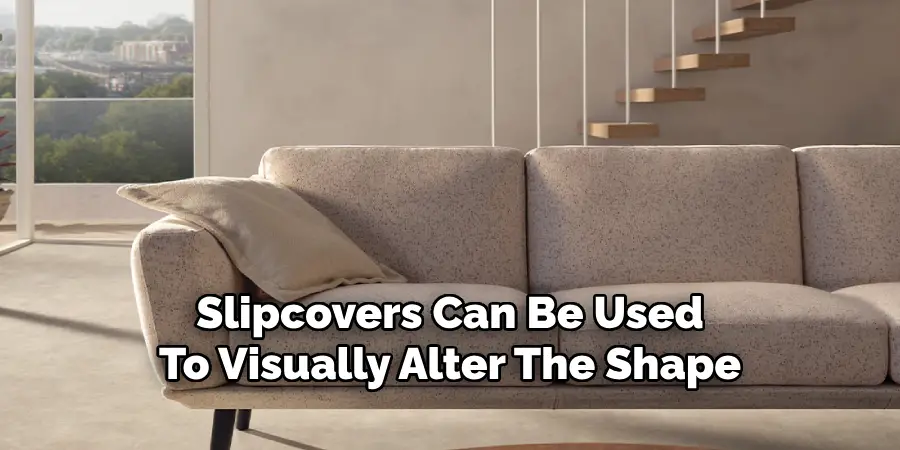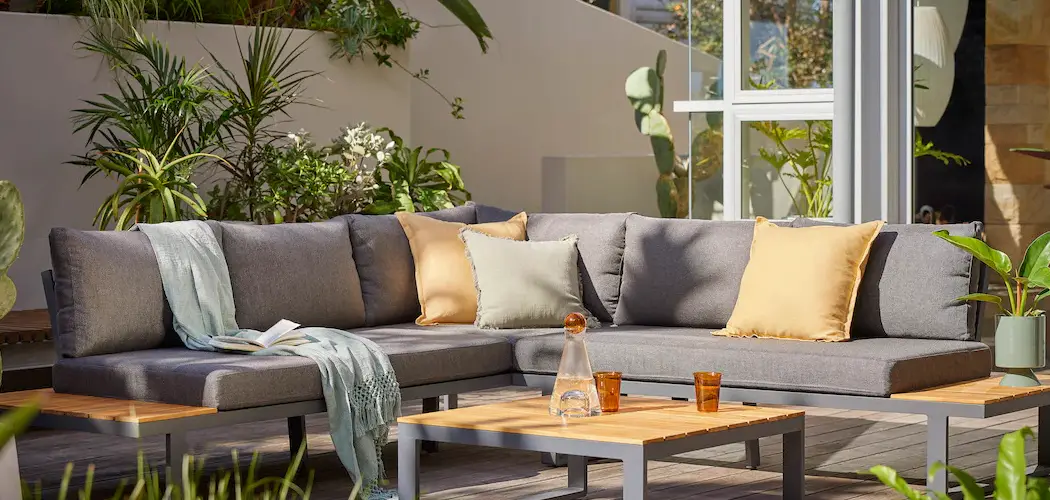Transforming your living space can be as simple as altering the appearance of your sofa, one of the most prominent pieces of furniture in your home. Changing the shape of your sofa not only revitalizes your interior design but also enhances the functionality and comfort of your seating arrangement.

Whether you’re looking to refresh the look for a new season, accommodate more guests, or simply match your evolving style, understanding the steps to reshape your sofa will ensure a satisfying and successful transformation. In this guide, we’ll explore how to change the shape of your sofa.
Why Changing the Shape of a Sofa
Altering the shape of your sofa can have a significant impact on both the aesthetics and the versatility of your living space. Firstly, it allows you to adapt to spatial constraints or newly reimagined layouts within your room. A sectional or modular sofa, for instance, can be rearranged to fit snugly into a corner or broaden across a larger area, providing more seating capacity or freeing up space as needed.
Additionally, changing the sofa’s shape can reflect shifts in personal style or current design trends, keeping your home environment fresh and inviting. Practically, it can also enhance comfort by allowing for more ergonomic seating configurations or the integration of additional features like chaise lounges.
Assessing Your Sofa for Modification
Before embarking on the journey to reshape your sofa, it is crucial to assess its current structure and materials. Begin by considering the type of sofa you own—whether it is a sectional, modular, or a traditional fixed-back design. This will heavily influence the ease and methods available for modification.

Examine the frame of your sofa to determine if it is built from wood, metal, or composite materials, as this impacts both flexibility and durability. It’s important to consider the cushions and upholstery; check for detachable cushion covers and the condition of the foam or fillings to decide if upgrades or replacements are needed. Additionally, take measurements of your space and sofa to ensure the new shape aligns with the room’s layout.
Tools and Materials Needed
Reshaping your sofa requires a careful selection of tools and materials to ensure a smooth process and satisfying results. Here is a list of essentials you may need:
- Measuring Tape: For precise measurements of your sofa and living space to ensure a perfect fit.
- Pliers and Screwdrivers: Useful for disassembling and assembling any modular or adjustable components of your sofa.
- Staple Gun and Staples: Necessary for reupholstering parts of the sofa or securing new fabrics.
- Fabric Scissors and Sewing Kit: Essential for trimming upholstery fabric to size and making necessary adjustments or repairs.
- Replacement Legs or Feet: In case you want to alter the height of your sofa for a new look or feel.
- Foam Padding or Cushion Fillings: To upgrade or replace existing cushions for enhanced comfort.
- Upholstery Fabric: If part of your redesign involves changing the fabric to match a new aesthetic.
- Furniture Glides or Caps: For smooth and easy repositioning, protecting your floor from scratches.
- Wood Glue or Metal Adhesive: Depending on your sofa’s frame, to ensure sturdy connections between components.

Having these tools and materials at your disposal will enable you to tackle any aspect of your sofa’s transformation with confidence and ease.
10 Methods How to Change the Shape of Your Sofa
1. Rearrange Modular Sections
If your sofa is modular, changing its shape can be as simple as rearranging the sections. Modular sofas are designed to adapt to various configurations, such as turning an L-shaped sofa into a U-shaped one or a simple straight design. Begin by detaching the pieces and experimenting with different layouts. Use the available space in your living room to determine the best configuration. This approach is not only practical but also allows you to refresh the look and functionality of your sofa without additional expense.
2. Add or Remove Sofa Sections
Many modular and sectional sofas allow you to add or remove pieces to alter their size and shape. To make your sofa larger, consider purchasing additional sections from the same brand or model to ensure a seamless fit. Alternatively, if the sofa feels too bulky for your space, remove a few sections to streamline its shape. This method is perfect for adapting your sofa to different rooms or evolving family needs while maintaining a cohesive look.
3. Incorporate an Ottoman
Adding an ottoman to your sofa setup can significantly change its shape and functionality. Place a large ottoman at one end of the sofa to create a chaise lounge effect, or position it in front of the sofa to mimic the appearance of a sectional. Opt for an ottoman with storage for added utility. Ensure the upholstery of the ottoman complements the sofa’s material and color for a harmonious design.
4. Use Slipcovers to Define Shape
Slipcovers can be used to visually alter the shape of your sofa. For example, you can use tailored slipcovers to smooth out sharp edges, giving the sofa a more rounded appearance. Alternatively, draping oversized slipcovers can create a relaxed, boxy look. Choose covers in colors or patterns that complement your decor and refresh the sofa’s appearance while subtly changing its perceived shape.

5. Reupholster for a Customized Look
Reupholstering your sofa offers an opportunity to change its shape by adding or removing padding and altering its contours. Work with a professional upholsterer to adjust the armrests, backrest, or cushions to achieve a new look. For instance, you might turn rolled arms into sleek, straight ones or add tufting to create a more structured appearance. This method is an investment but can dramatically transform your sofa into a unique statement piece.
6. Attach or Modify Armrests
The armrests of a sofa play a significant role in defining its shape. By modifying or replacing them, you can change the overall profile of the piece. For a modern and streamlined look, remove bulky armrests altogether. Alternatively, add wide, cushioned armrests for a more inviting appearance. If you’re handy with DIY projects, you can build custom armrests that suit your aesthetic preferences and attach them securely to the sofa frame.
7. Change the Backrest Design
Altering the backrest is another effective way to reshape your sofa. Low-backed sofas can be converted into high-backed designs for a more formal look, or you can cut down tall backs for a contemporary, minimalist appearance. Cushioned backrests can be replaced with loose, oversized pillows to create a casual, lounge-like vibe. For built-in backrests, consult a professional to ensure any structural changes maintain the sofa’s integrity.
8. Add a Corner Piece
If your sofa is straight, you can create an L- or U-shaped design by adding a corner piece. Many furniture retailers sell standalone corner sections that match popular sofa models. Simply position the corner piece at one end of the sofa and rearrange the seating to fit around it. This change not only alters the shape but also increases seating capacity and creates a cozy, conversational layout.

9. Shorten or Extend the Frame
For a dramatic transformation, modify the sofa’s frame to change its length or width. Shortening the frame can turn a large sofa into a loveseat, while extending it can add additional seating. This method requires advanced carpentry skills or the assistance of a furniture repair professional. Once the frame is adjusted, you may need to reupholster the sofa to ensure the fabric fits the new dimensions perfectly.
10. Combine Multiple Sofas
If you have multiple sofas, consider combining them to create a unique, custom shape. For example, two straight sofas can be arranged perpendicular to each other to form an L-shape. Alternatively, connect a loveseat to the end of a full-sized sofa to create a chaise lounge extension. Use coordinating slipcovers or upholstery to unify the pieces visually, ensuring they look like a single, cohesive unit.
Common Mistakes to Avoid
When altering the shape of your sofa, several common pitfalls could undermine your project’s success or result in undesirable outcomes. First, avoid neglecting the sofa’s structural integrity. Modifying the frame or removing key components without professional guidance can compromise the sofa’s stability and safety. Second, ensure that all additional sections or modifications, such as ottomans or slipcovers, are compatible with your original sofa brand or design to maintain a cohesive look and fit. Third, don’t underestimate the importance of precise measurements.

Failing to accurately measure your space and sofa components can lead to mismatched proportions or overcrowding. Lastly, consider the long-term impact of your changes; it’s wise to opt for reversible options or solutions that can adapt to future needs. Being mindful of these potential missteps can help you create a stunning and functional piece that enhances your living space.
Conclusion
Transforming the shape of your sofa can breathe new life into your living space, offering an opportunity to express your personal style and cater to evolving needs. Whether through simple adjustments like integrating an ottoman or more complex modifications such as altering the frame, there are numerous ways to customize your furniture. Thanks for reading, and we hope this has given you some inspiration on how to change the shape of your sofa!
you can also check it out Do Adjustable Desks Work

